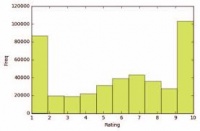Testimonials
A testimony is a formal or informal statement that reflects the characteristics of an individual, organization, or service. The term testimony is used often by a business when they themselves gather and manage testimonies regarding their services. Testimonials owned and managed by a third party is a type of testimony known as a review.
Testimonials have shaped consumerism by subconsciously influencing our decision making. Consumers are unaware of the legitimacy of many of the testimonies, yet continue to rely on them for everyday purchases. This article will discuss how testimonies grew in consumerism interest, questions the reliability, and analyzes the ethics of testimony.
Contents
History
Before the Internet
Testimonials were only exchanged between relatives, friends, and co-workers before the introduction of the internet. Recommendations were given and opinions were offered. Services given by new businesses were a higher risk to the consumer. Consumers tend to go with familiarity rather than the unknown. Only when testimonials from peers framed a service from a business or a product as below par, is when new business earned the opportunity to differentiate and provide their services.
There was a lot of risk for new businesses as any misstep could result in the consumer talking ill about their service or product. Yet, exceeding expectations creates the opportunity for recommendations and improved business in the consumers' network.
Testimonials did not impact consumers outside of previous customers’ networks. New consumers were persuaded solely on marketing and it was up to the marketer to meet expectations of that service or product.
The Age of the Internet
Decentralization
Ratings
Reliability
Polarized Distribution
Consideration must be made on the benefits one receives for writing a testimony. Testimonies (more specifically reviews) consist of a very polarized opinion based. Inspecting the marks given for ratings, it’s evident that the majority consists of either the lowest (for example one star) or the highest mark (five stars). Testimonies are driven between the idea that a service or product is good or bad.
The personal benefit a reviewer receives from writing a positive is none. It may satisfy a feeling of beholdmanship toward the business only if the consumer feels their services exceeded the monetary value that consumer paid. Beyond that, a positive review only benefits the reader.
The benefit a consumer receives from writing a negative review of a service or product is that they play the role of damaging the image of the business. It satisfies the feeling of vengefulness when they felt they were wronged. [1]Humans feel the pain of a loss (in these cases of monetary value or time) and will act on it more than if they were to gain from the situation.
Filterization
Filtering is the process of selecting testimonies to be displayed in an ordered list. The reader will read the reviews present to them from the filtering process and read only one or two reviews before establishing an opinion on the service or product. The dilemma arises when considering how to represent all the reviews of a given service or product with only the few reviews the reader will actually read.
Weight is the differentiator of worth between one testimony to the other. It is an important aspect when considering the order of how testimonials will be filtered and ultimately deciding the first and second written testimonies to be displayed before a consumer.
Paid Testimonies
Author Credentials
Inaccuracy
Ethics
Effects on Consumers
Effects on Organizations and Individual's Services
Accuracy
Desired Representation
Perceieved Representation
Objective Representation
References
- [2]Floridi, Luciano. The 4th Revolution: How the Infosphere Is Reshaping Human Reality. Oxford University Press, 2016
- [1]The Quarterly Journal of Economics, Volume 106, Issue 4, 1 November 1991, Pages 1039–1061, https://doi.org/10.2307/2937956
